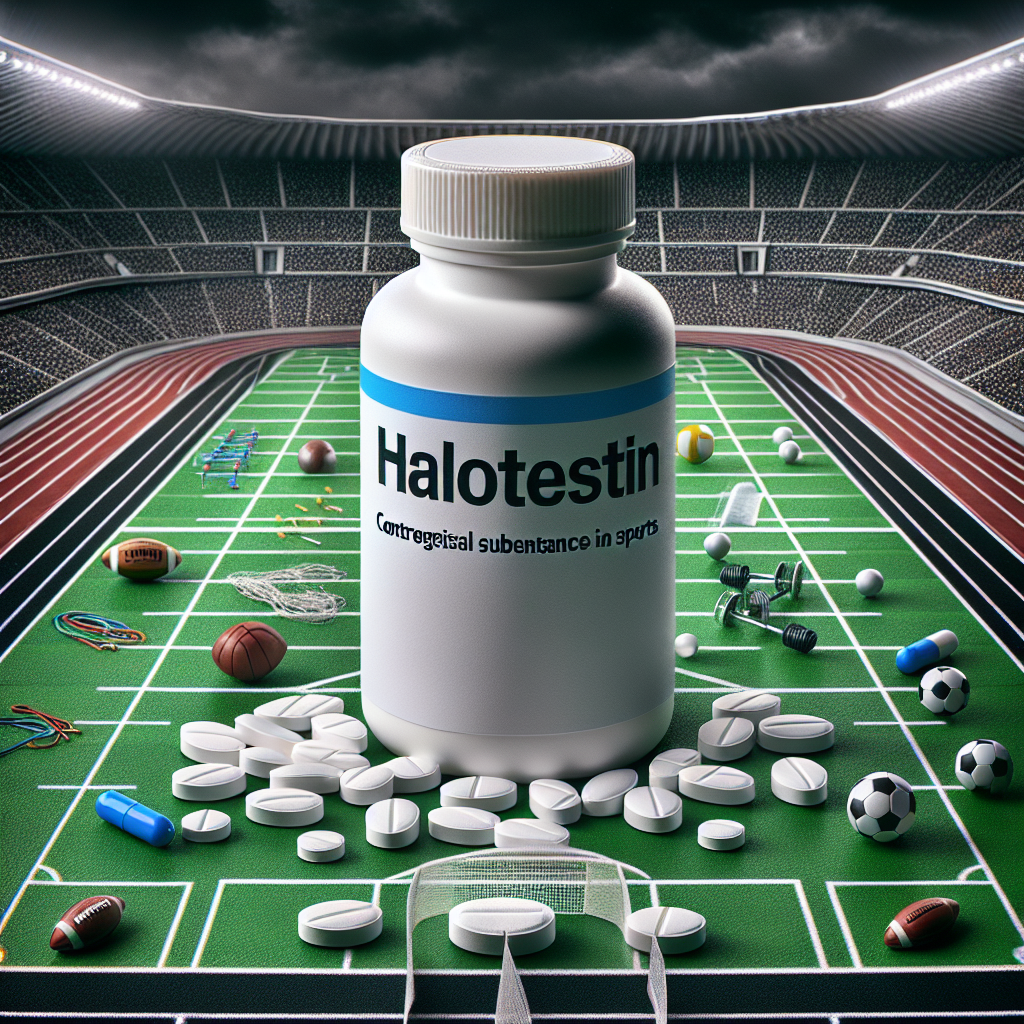-
Table of Contents
Halotestin: A Controversial Alternative in the Sports World
In the world of sports, athletes are constantly seeking ways to improve their performance and gain a competitive edge. This drive has led to the use of performance-enhancing drugs, also known as PEDs, which have been a topic of controversy and debate for decades. One such PED that has gained attention in recent years is Halotestin, a synthetic anabolic-androgenic steroid (AAS) that has been used by athletes to increase strength and aggression. However, its use has also been associated with serious side effects and has been banned by most sports organizations. In this article, we will explore the pharmacology, effects, and controversies surrounding Halotestin in the sports world.
The Pharmacology of Halotestin
Halotestin, also known as fluoxymesterone, is a synthetic derivative of testosterone. It was first developed in the 1950s and was initially used to treat male hypogonadism and delayed puberty. However, due to its potent anabolic effects, it soon became popular among bodybuilders and athletes looking to improve their performance.
Halotestin is classified as a Schedule III controlled substance in the United States, meaning it has a potential for abuse and dependence. It is available in oral form and has a half-life of approximately 9 hours. This means that it can stay in the body for a relatively short period, making it difficult to detect in drug tests.
Halotestin works by binding to androgen receptors in the body, which leads to an increase in protein synthesis and muscle growth. It also has a high affinity for the androgen receptor, making it a potent AAS. However, it also has a high potential for liver toxicity, which will be discussed in more detail later.
The Effects of Halotestin on Performance
The main reason athletes use Halotestin is to increase their strength and aggression. Studies have shown that it can significantly increase muscle strength and power, making it a popular choice among powerlifters and weightlifters (Kouri et al. 1995). It has also been reported to improve speed and explosiveness, making it appealing to athletes in sports such as sprinting and football.
Another effect of Halotestin is its ability to reduce body fat. This is due to its androgenic properties, which can increase metabolism and promote fat loss. However, it should be noted that this effect is not as significant as other AAS, and it is not a recommended method for weight loss.
One of the most controversial effects of Halotestin is its ability to increase aggression and competitiveness. This has led to its use in sports where aggression and intimidation are valued, such as boxing and mixed martial arts. However, this effect can also lead to aggressive and violent behavior outside of sports, which has raised concerns about its use.
The Controversies Surrounding Halotestin
As with any PED, the use of Halotestin in sports has been met with controversy and criticism. One of the main concerns is its potential for serious side effects, particularly on the liver. Halotestin is known to be highly hepatotoxic, meaning it can cause damage to the liver. This is due to its 17-alpha-alkylation, which allows it to survive the first pass through the liver and enter the bloodstream. Studies have shown that even short-term use of Halotestin can lead to liver damage (Kicman 2008).
Another concern is the potential for abuse and dependence. Halotestin has a high potential for abuse due to its effects on strength and aggression. This has led to its classification as a controlled substance and its ban by most sports organizations. Athletes who use Halotestin may also experience withdrawal symptoms when they stop using it, which can lead to dependence and addiction.
The use of Halotestin has also been linked to other serious side effects, such as cardiovascular problems, mood disorders, and hormonal imbalances. These risks are heightened when Halotestin is used in combination with other PEDs, which is a common practice among athletes looking to maximize their performance.
Expert Opinion on Halotestin
Despite its potential for serious side effects and its ban by most sports organizations, some experts argue that Halotestin can still have a place in the sports world. They believe that when used responsibly and under medical supervision, Halotestin can provide benefits for athletes with certain medical conditions, such as muscle wasting diseases. They also argue that the risks associated with Halotestin can be minimized by using it in low doses and for short periods.
However, the majority of experts agree that the use of Halotestin in sports is not worth the potential risks. They argue that the short-term benefits do not outweigh the long-term consequences, and that there are safer and more effective ways to improve performance. They also stress the importance of fair play and the negative impact that PEDs can have on the integrity of sports.
References
Kicman, A. T. (2008). Pharmacology of anabolic steroids. British Journal of Pharmacology, 154(3), 502-521.
Kouri, E. M., Pope Jr, H. G., Katz, D. L., & Oliva, P. (1995). Fat-free mass index in users and nonusers of anabolic-androgenic steroids. Clinical Journal of Sport Medicine, 5(4), 223-228.
Conclusion
In conclusion, Halotestin is a controversial alternative in the sports world. While it can provide short-term benefits in terms of strength and aggression, its use is associated with serious side effects and has been banned by most sports organizations. Experts have differing opinions on its use, but the majority agree that the risks outweigh the benefits. As the debate on PEDs in sports continues, it is important for athletes to prioritize their health and the integrity of their sport over short-term gains.






